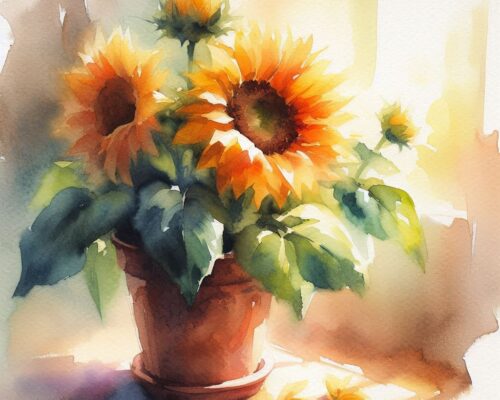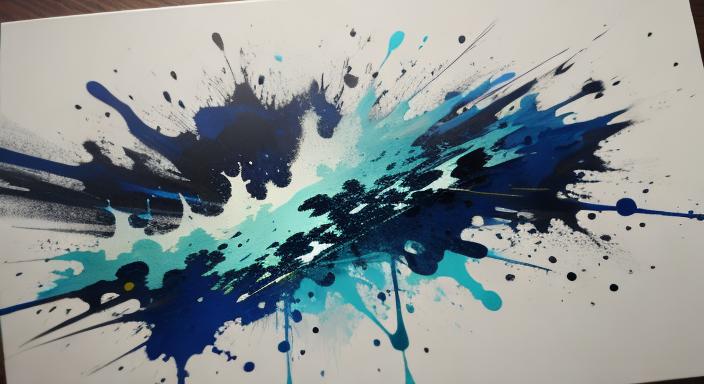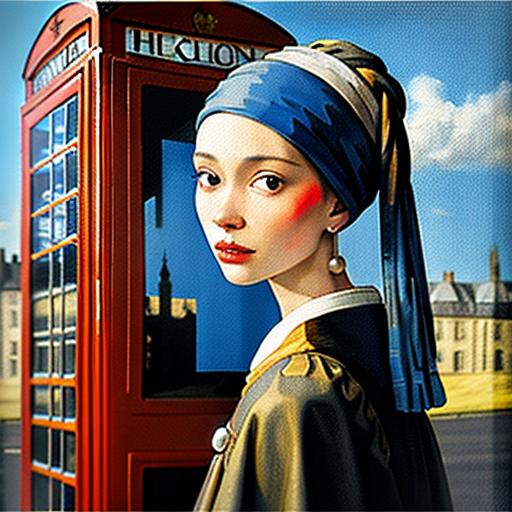Imagine walking through a grand art gallery, surrounded by stunning masterpieces. Some paintings burst with bright colors, while others embrace shadowy tones. But did you know that many of these artworks hold hidden meanings in famous paintings—secret messages woven into the brushstrokes? Artists throughout history have used symbolism to tell deeper stories, turning their paintings into visual puzzles waiting to be solved!
At Prominent Painting, we love to explore all aspects of art, and today we’re going on an adventure to uncover the secrets behind some of the most famous paintings in the world. It’s like learning a secret language that artists used to talk to us across time.
Key Takeaways:
- Famous paintings often contain hidden meanings and symbolism that aren’t obvious at first glance.
- Understanding these meanings can make looking at art much more interesting and rewarding.
- Artists hid meanings for many reasons, including religious beliefs, personal feelings, and historical events.
- We’ll explore examples from famous paintings like the Mona Lisa, The Starry Night, and The Scream.
- By learning to spot these hidden messages, you can become an art detective and understand paintings on a deeper level.
- What are Hidden Meanings in Art? It's Like a Secret Code!
- Why Did Artists Hide Meanings? Many Secrets to Tell!
- Renaissance Era Secrets: Decoding The Last Supper
- Unveiling Symbolism in Baroque: The Mystery of Las Meninas
- Romanticism's Veiled Messages: Emotions in Hiding
- Impressionism and Subtle Clues: Catching the Moment
- Post-Impressionism and Personal Codes: Beyond the Surface
- Expressionism's Emotional Depth: The Inner Scream
- Surrealism and the Unconscious: Dreams on Canvas
- Modern Art and Open Interpretation: Meaning is in the Eye of the Beholder
What are Hidden Meanings in Art? It’s Like a Secret Code!
Imagine you and your friend have a secret handshake or a code word. Artists sometimes do the same thing in their paintings, but instead of handshakes, they use symbols. Hidden meanings in art are like secret messages the artist puts into their work for those who know how to “read” them.
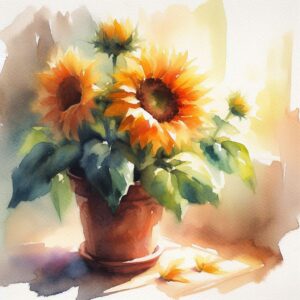
Think of it like this: if you see a picture of a dog wagging its tail, you know it’s probably happy. That’s a simple symbol. But in art, symbols can be trickier. A certain flower might mean love, or a specific color might represent sadness. This is called symbolism in art.
Iconography is like a dictionary for these symbols. It helps us understand what different objects and figures might mean in a painting, especially in older art where artists used a lot of religious and mythical symbols.
Sometimes, a whole painting can be an allegory. This is like a story where the characters and events represent deeper ideas or moral lessons. For example, a painting might show a group of people having a picnic, but it could really be about the idea of “happiness” or “peace.”
And then there’s the metaphor in art, where an object or image is used to represent something else entirely. For example, a broken vase might be a metaphor for a broken heart. It’s all about looking closer and thinking about what the artist might be trying to tell us beyond just what we see on the surface.
Why Did Artists Hide Meanings? Many Secrets to Tell!
Now, you might wonder, why would artists go to all this trouble to hide meanings in their paintings? Why not just say what they want to say clearly? Well, there are many reasons!
Sometimes, artistic intention is at play. Artists are creative people, and they love to challenge us and make us think. Hiding meanings can be a way to make their art more interesting and engaging. It’s like adding a puzzle for the viewer to solve.
In the olden days, patronage in art played a big role. Rich and powerful people, like kings and queens, often paid artists to create paintings. Sometimes, artists would include secret symbols to please their patrons or to send subtle messages that only certain people would understand.
Historical context is also super important. The time when a painting was made, and what was happening in the world then, can deeply affect the hidden meanings in a painting. For instance, during times of strict rule, artists might hide messages of protest or rebellion in their work.
Finally, visual storytelling itself can be a reason for hidden meanings. Artists are storytellers, and sometimes they use symbols and hidden messages to make their stories richer and more complex. It’s like adding extra layers to a cake – each layer makes it more delicious and interesting! They might use veiled meaning to add depth.
Renaissance Era Secrets: Decoding The Last Supper
Let’s travel back in time to the Renaissance, a period known for amazing art! Renaissance symbolism was very important back then, and many paintings from this time are packed with hidden meanings, often related to religious symbolism in art.
Take Leonardo da Vinci’s The Last Supper, for example, painted during the Renaissance. At first glance, it shows Jesus having his last meal with his followers. But look closer! Everything in this painting is symbolic.

- The Number Three: Groups of three apostles are arranged on either side of Jesus. The number three was very important in Christianity, representing the Holy Trinity.
- Judas: Can you spot Judas? He’s often shown holding a bag of money, symbolizing his betrayal of Jesus. He’s also in shadow, unlike the other apostles who are in the light.
- Table Arrangement: The table is set simply, and the food is plain, emphasizing the spiritual nature of the meal rather than a fancy dinner.
These aren’t just random details; they’re all deliberate choices by da Vinci to add deeper layers of meaning to The Last Supper, making it much more than just a picture of a meal. For more on understanding art, you might find Prominent Painting’s guide to art appreciation helpful.
Unveiling Symbolism in Baroque: The Mystery of Las Meninas
Moving forward in art history, we come to the Baroque period. Baroque art is known for being dramatic and full of emotion, and hidden meanings are still there, but sometimes in a more complex and less obvious way.
Diego Velázquez’s Las Meninas is a masterpiece from the Baroque era. It seems like a portrait of a young princess, but it’s actually much more complicated! It’s full of “art world secrets.”

- The Artist Himself: Velázquez paints himself into the picture, standing at his easel. What does this mean? Is he saying that the act of painting itself is important?
- Mirrors and Reflections: In the background, we see a mirror reflecting the King and Queen. But why are they in the mirror and not directly in the painting? This veiled meaning makes us think about who is really being looked at and who is looking.
- Light and Shadow: Baroque art loves dramatic light and shadow. In Las Meninas, light and shadow are used to draw our eyes to different parts of the painting, highlighting certain figures and hiding others, adding layers of art mystery.
Las Meninas is like a puzzle box; every time you look at it, you might discover a new secret, a new deeper meaning. For more about artistic techniques, explore Prominent Painting’s guide to painting techniques.
Romanticism’s Veiled Messages: Emotions in Hiding
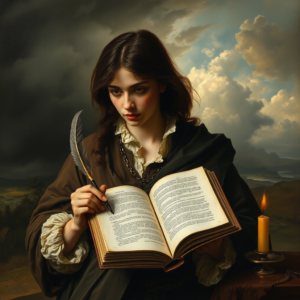
The Romanticism movement was all about feelings, imagination, and individual experiences. Artists in this period often used art to express their innermost thoughts and emotions, sometimes through secret symbolism and underlying meaning.
While Romanticism isn’t always about hiding meanings like the Renaissance, the emphasis on personal emotion often leads to art that needs art interpretation. Artists might use landscapes or historical events as metaphors for their feelings.
Consider paintings from this era: a stormy sea might symbolize inner turmoil, or a lone figure in a vast landscape could represent feelings of isolation and longing. The veiled meaning in Romantic art is often tied to the artist’s personal emotional landscape, requiring us to feel as well as see.
While we don’t have a specific painting from the entity list perfectly fitting Romanticism with explicit hidden symbols, understanding the movement itself helps unlock the emotional depth present in many artworks of the time. Explore more about art history with our evolution of art movements guide.
Impressionism and Subtle Clues: Catching the Moment
Impressionism changed art by focusing on capturing a fleeting moment, the impression of light and color. While Impressionists were less concerned with hidden symbols in the traditional sense, they used visual clues and interpret symbolism in new ways.
Claude Monet’s Water Lilies series, for example, might seem like just pretty pictures of flowers. But think about it: Monet painted these water lilies over and over again, in different lights and seasons.

- Light and Color: The real subject of Water Lilies isn’t just the flowers themselves, but the way light changes and reflects on the water. Monet is using light and color as symbols of time and change.
- Repetition: By painting the same subject repeatedly, Monet invites us to look closer and see the subtle differences and the fleeting nature of moments.
Impressionism’s hidden meaning is often about capturing the ephemeral, the beauty of the everyday, and the subjective experience of seeing. The iconic artwork of Monet encourages us to interpret symbolism through feeling and perception rather than strict iconography. To start creating your own art inspired by Impressionism, check out our beginner’s guide to watercolors.
Post-Impressionism and Personal Codes: Beyond the Surface
Post-Impressionism built upon Impressionism but went further, with artists exploring more personal and emotional themes. They used art to decipher meaning and often imbued their paintings with their own unique artistic intention, creating personal visual languages.
Vincent van Gogh’s The Starry Night is a prime example of Post-Impressionism. It’s more than just a night landscape; it’s a painting filled with emotion and personal symbolism.

- Swirling Sky: The swirling, dynamic sky is often interpreted as representing Van Gogh’s inner turmoil and emotional state. It’s a powerful metaphor in art for his mental state.
- Cypress Tree: The dark, flame-like cypress tree reaching up to the sky can be seen as a symbol of death and eternity, or longing and connection between earth and heaven.
- Village Below: The peaceful village below contrasts with the turbulent sky, possibly representing the artist’s longing for peace or a separation between the turmoil within and the calm of the world.
Van Gogh used secret symbolism not just to depict a scene, but to convey his deepest feelings and thoughts about life and the universe. To learn more about color and emotion like Van Gogh used, see Guide to Color Theory.
Expressionism’s Emotional Depth: The Inner Scream
Expressionism is all about expressing intense emotions directly and powerfully. Expressionist artists used distorted shapes, exaggerated colors, and jarring compositions to uncover secrets of the human psyche and express deep, often dark, emotions and the deeper meaning of human experience.
Edvard Munch’s The Scream is the ultimate example of Expressionism. It’s a painting that screams emotion right at you!

- The Screaming Figure: The central figure isn’t literally screaming out loud, but the whole image conveys a feeling of overwhelming anguish and terror. It’s a visual clue to extreme emotion.
- Wavy Lines and Colors: The distorted lines and fiery colors of the sky seem to echo the figure’s inner turmoil, amplifying the feeling of anxiety and dread.
- Simple Form, Powerful Emotion: Despite its simple composition, The Scream is incredibly powerful because it focuses solely on conveying raw emotion, decipher meaning directly through feeling.
The Scream isn’t hiding its meaning – it’s shouting it at us! But the power comes from understanding how Munch uses visual elements to express such profound and universal feelings of fear and isolation. If The Scream inspires you, maybe try expressing your own emotions through painting with Prominent Painting’s guide to painting emotions.
Surrealism and the Unconscious: Dreams on Canvas
Surrealism was an art movement that explored the world of dreams, the unconscious mind, and the bizarre and illogical. Surrealist artists aimed to uncover secrets of the subconscious and bring them to life on canvas, often using strange and unexpected imagery with underlying meaning.
Salvador Dalí’s The Persistence of Memory is a classic Surrealist painting. It features melting clocks in a dreamlike landscape. What could it all mean?
- Melting Clocks: The most iconic image, the melting clocks, is often interpreted as representing the non-linear nature of time in dreams and memories. Time isn’t fixed and rigid, but fluid and subjective.
- Dreamlike Landscape: The barren, dreamlike landscape adds to the sense of unreality and the subconscious. It’s a world that doesn’t follow the rules of logic.
- Symbolism of Decay: The ants and the decaying figure can symbolize the passage of time, decay, and the fleeting nature of life and memory.
Dalí’s painting challenges our logical minds and invites us to explore the strange and fascinating world of our subconscious. The art mystery is part of the appeal! For a deeper dive into surreal worlds, maybe explore our articles on AI art generation, which also delves into unexpected and dreamlike visuals.
Modern Art and Open Interpretation: Meaning is in the Eye of the Beholder
As we move into modern art and beyond, the idea of “hidden meanings” becomes even more complex. Many modern artists moved away from traditional symbolism and started focusing on personal expression and art interpretation that is more open-ended.
Paintings like Pablo Picasso’s Guernica, Grant Wood’s American Gothic, Johannes Vermeer’s The Girl with a Pearl Earring, and even the ever-enigmatic Mona Lisa by Leonardo da Vinci are all masterpieces that invite multiple interpretations.
- Personal Response: In modern art, what a painting means can depend a lot on who is looking at it. Your own experiences, feelings, and contextual analysis play a big role.
- Artist’s Intent vs. Viewer’s Meaning: Sometimes, what the artist intended might not even be the most important meaning. What matters more is how the artwork speaks to you personally.
- Ongoing Conversation: Modern paintings are often like starting a conversation. They ask questions, provoke thoughts, and invite us to engage with the art and find our own meanings within them.
While some paintings may still contain secret symbolism, the real beauty of modern art often lies in its ability to spark individual thought and feeling. It’s less about finding one “hidden meaning” and more about having your own unique experience with the artwork.
Table: Famous Paintings and Possible Hidden Meanings
| Painting | Artist | Art Movement | Possible Hidden Meanings |
|---|---|---|---|
| The Last Supper | Leonardo da Vinci | Renaissance | Religious symbolism, betrayal, spiritual significance |
| Las Meninas | Diego Velázquez | Baroque | The role of the artist, perspective, reality vs. reflection |
| Water Lilies | Claude Monet | Impressionism | Fleeting moments, light and change, beauty in the everyday |
| The Starry Night | Vincent van Gogh | Post-Impressionism | Inner turmoil, longing, connection between earth and heaven |
| The Scream | Edvard Munch | Expressionism | Overwhelming anguish, isolation, universal fear |
| The Persistence of Memory | Salvador Dalí | Surrealism | Non-linear time, dream logic, the subconscious |
| Guernica | Pablo Picasso | Modern Art | (Open to interpretation) – Suffering of war, human tragedy |
| American Gothic | Grant Wood | Modern Art | (Open to interpretation) – American identity, rural life, resilience |
| Girl with a Pearl Earring | Johannes Vermeer | Baroque (though earlier) | (Open to interpretation) – Mystery, beauty, fleeting youth |
| Mona Lisa | Leonardo da Vinci | Renaissance | (Open to interpretation) – Enigma, beauty, the nature of portraiture |
“The true mystery of the world is the visible, not the invisible.”
Oscar Wilde.
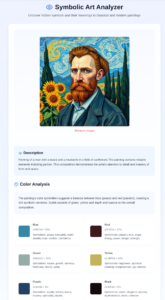
This quote reminds us that even what we can see in art is often mysterious and full of potential meanings if we just look closely enough.
Be your own Art Detective
Use our tool to find hidden meaning in symbols and colour: click on the image to launch the tool:
Frequently Asked Questions about Hidden Meanings in Paintings
- Are hidden meanings always intentional? Sometimes, yes, artists deliberately put them there. Other times, meanings can be interpreted by viewers even if the artist didn’t consciously intend them. Art is a two-way street between the creator and the observer.
- How can I learn to spot hidden meanings? Start by learning about common symbols in art history. Read about the artist, the time period, and the art movement. And most importantly, look closely and think about what you see and how it makes you feel.
- Is there always a “right” answer when interpreting hidden meanings? Not always! Art is often open to interpretation. What one person sees as a hidden meaning, another might see differently. That’s part of what makes art so fascinating.
- Can modern paintings have hidden meanings too? Yes, absolutely! While modern artists might use different kinds of symbolism or be more focused on personal expression, their works can still be rich with layers of meaning, even if those meanings are more open to individual interpretation.
- Where can I learn more about art symbolism? Websites like Prominent Painting are a great place to start! You can also find books on art history, iconography, and symbolism in art at your local library.
So, next time you see famous paintings, remember to look beyond the surface – what are the hidden meanings in Paintings?. There might be a whole secret world of meanings waiting for you to discover! Happy art detective work!

